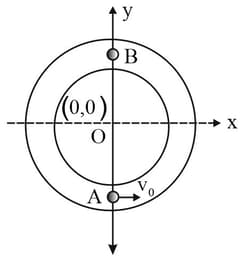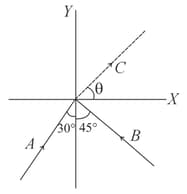HARD
Earn 100
A hollow circular tube of radius and negligible internal diameter is fixed on horizontal surface. Ball of mass is given velocity in the shown direction. It collides with ball of mass . Collision is perfectly elastic. If centre of loop is origin of co-ordinate system, then co-ordinate of next collision is


(a)
(b)
(c)
(d)
50% studentsanswered this correctly
Important Questions on Work, Energy and Power
MEDIUM
HARD

HARD
EASY
HARD
HARD
EASY
MEDIUM
EASY
HARD
MEDIUM
HARD

EASY
MEDIUM
MEDIUM
MEDIUM
EASY

HARD
HARD
MEDIUM

